B4RN Aim FTTH Broadband at 40,000 Rural UK Premises by 2022
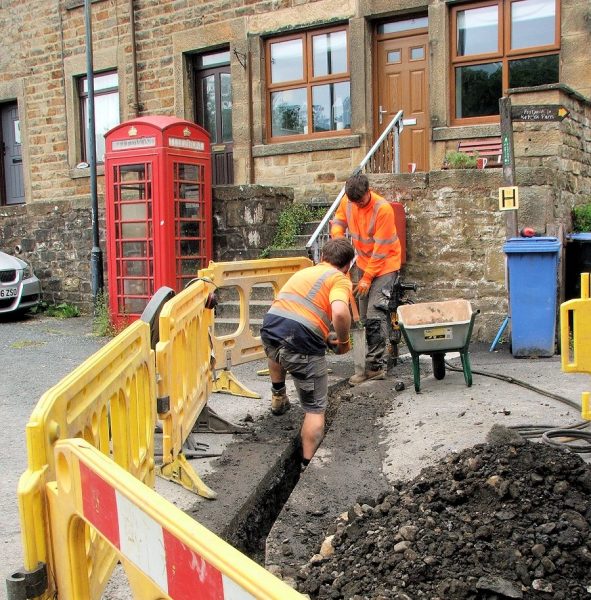
UK ISP B4RN (Broadband for the Rural North), which is deploying a 10Gbps capable Fibre-to-the-Home (FTTH) network to rural premises in several counties across England, has furnished us with a progress update and revealed that they aim to reach 40,000 properties passed by 31st March 2022 and possibly c.70,000 by 2025/26.
The provider, which has been busy building “full fibre” to homes since 2012, is registered as a Community Benefit Society (i.e. it can’t be bought by a commercial operator and profits are distributed back into the community) and can reach into some very remote parts of Lancashire, Cheshire, Cumbria, Essex, Norfolk, Suffolk and Yorkshire.
Until recently the majority of their network had been funded by communities investing in the company and many of those did so while also helping to physically build the new fibre infrastructure (volunteers on soft digs through fields etc.). This tends to generate high levels of take-up in a very short space of time because people often feel a strong connection to that which they’ve helped to create.
Advertisement
However as B4RN has grown then they’ve also built-up their own in-house civil engineering team and often work with sub-contractors on bigger builds, which forms part of a hybrid model (i.e. B4RN provides all the design, materials and equipment but a third-party is doing the civils on a daily rate). Similarly their funding sources have also become more diverse.
As it stands today the operator has so far been supported by around £7m in shares, £3.3m from a Triodos Bond and £1.6m in community investor loans. The latter is shrinking as they’ve already paid off over half of the total loans they had. On top of that they’ve also had around £2.3m worth of gigabit broadband vouchers (GBVS and RGC) from the government and another £3.7m worth of those are set for future builds (and rising).
The COVID-19 Impact
Despite all this progress the ISP is still a bit behind where they’d normally be and currently have 7,235 connections (i.e. customers, not premises passed) on their network, which is up from 6,000 a year ago. A big part of the reason for this is due to all the disruption caused by the COVID-19 crisis, which has made it challenging to get into houses to do the last bit of fibre.
As a result they’re currently delivering around 150 connections per month, which is well below their target for this period but that should slowly climb back to around 200 in July and then 250 in August etc. Going forwards the actual build rate should soon reach 500 per month.
Advertisement
The operator’s latest target for 31st March 2022 is now 40,000 properties passed (with 20,000 connected) and if all goes well then they hope to hit around 70,000 by 2025/26, which is quite a significant chunk of remote rural premises for an operator that, some years ago now, started with only a few volunteers and some shovels.
Barry Forde, CEO of B4RN, told ISPreview.co.uk:
“One big change is that we are now firing up a parallel build programme based on traditional urban build techniques. We have quite a number of largish villages, typically ~1000 properties (considered a city up here!), which we have skirted round in the past as our ‘across the fields and up the garden’ model doesn’t work there. Too many road locked properties.
We are now going with a narrow trenching, 100mm, dig model along the pavements and roads and dropping a Toby Box outside each property. The first build starts in Halton (926 properties) on the 20th July and we are aiming for an initial build of about 100 properties per month ramping up to 300 over a couple of months. The highways people are being very helpful and giving us permits as we request them.
We are starting with a 5 man team delivering 60m of dig per day, climbing to an 8 man team in August delivering 120m per day and then adding additional 8 man teams as we settle in. Target is a 1000 property village per 6 months per 8 man team.”
Aside from Halton, Barry mentions that Caton, Kirkby Lonsdale, Sedbergh and a raft of other villages are also likely to benefit from their new approach. Further details can usually be found on the Network Coverage Page of B4RN’s website.
Going forward B4RN also has one eye on the UK Government’s proposed £5bn investment, which aims to ensure that “gigabit-capable” broadband can reach every home by the end of 2025 (focused upon the final 20% of premises). A new voucher scheme (post-RGC) is likely to play a key role in that too and this would play to B4RN’s existing strengths.
Meanwhile customers continue to benefit from one of the cheapest and fastest broadband connections in the UK. Subscribers pay just £30 inc. VAT per month for a 1000Mbps (symmetrical) unlimited service and there’s also a one-off connection fee of £150. Plus if you have deeper pockets then a 10Gbps service can be had for £150 per month with a one-off connection fee of £360 (here).
Advertisement
Big things have small beginnings.
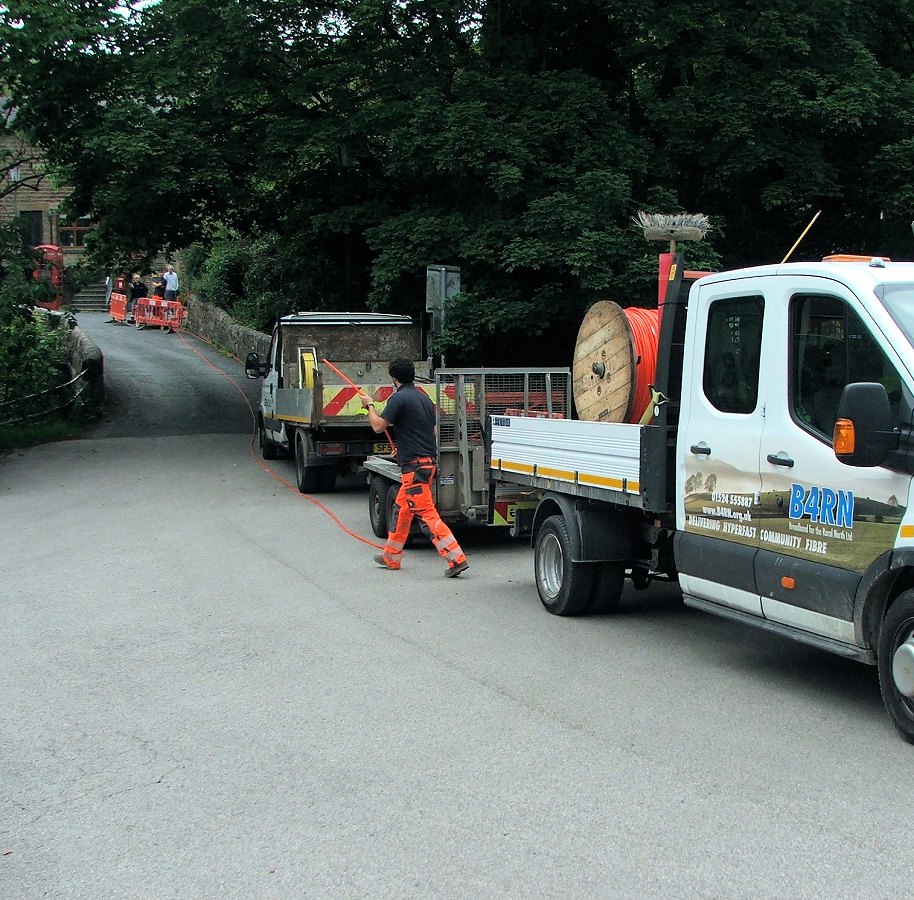
Mark is a professional technology writer, IT consultant and computer engineer from Dorset (England), he also founded ISPreview in 1999 and enjoys analysing the latest telecoms and broadband developments. Find me on X (Twitter), Mastodon, Facebook, BlueSky, Threads.net and Linkedin.
« OneWeb Broadband Satellite Service Sold to UK Gov Consortium






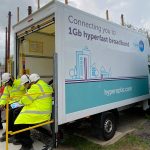

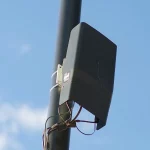




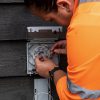








































Excellent news. Barry seems to know what he’s doing and I wish them all every success.
A very different proposition from ‘across the fields and up the garden’ so fingers crossed.
They are actually well set to reach such areas with the previous build having gotten plant pretty close. Such rural areas, once you get to them, are a decent opportunity.
A place for everyone, everyone in their place and hopefully in time the right result for as many as possible.
I wouldn’t say they now what they are doing, just operating on very small scale. Then sticking up to active ethernet and fiber switches seems rather limiting.
Marek- interesting comment. Limiting in what way?
I’ve seen B4rn explain the decision before – sticking to the sort of kit that you might experience in a small business comms rack means anybody can understand it and you can get a replacement overnight from Ebuyer if you need it, point-to-point ethernet prevents whatever is in the ground from causing bottlenecks, and going for Gpon probably doesn’t make sense with the density of properties being covered.
Ethernet leased line services are delivered as a point-to-point active ethernet link back to an exchange, it doesn’t seem to be very limiting.
I can think of no solution with fewer limitations than point to point fibre. I always considered it the ‘gold standard’ – dark fibre.
I would be interested in what the limitations are. The primary driver behind the use of PON is not a technical decision. The biggest factor I’ve seen is a simple one – PtP fibre may be physically unbundled, PON may not.
I guess the other good thing about point-point is you also don’t have to worry about your data being broadcast through the splitter. I know Huawei say they’re using AES at the OLT, but I wonder how secure all the keys really are.
The crypto is fine.
Check out other countries in Europe, who is doing p2p fiber, Sweden, maybe Romania, some older installation from 5-10 years ago, who else?
Most big and small ISP (even in Poland GPON is very common for smaller villages and cities) use GPON because you reduce power and fiber requirement, no need to power up switches and you can pull multiple fiber after splitter instead of switch.
B4RN is doing metro ethernet, those are just switches from manufactuer that isn’y reputable (Netgear…) which are expensive on their own. I think with GPON they could have a lot of less worries about suppling power and distance would be limiting then? How long can you pull GPON fiber, 15km or more? Less users per splitter means you have more optical power so fiber line can be longer.
But surely if GPON is encrypted there would need to be a whole PKI infrastructure around it and all the associated overheads like HSM hardware, key management ceremonies, renewal of the keys and audit. A small provider wouldn’t want all those worries. I guess P2P would also mean dedicated bandwidth on the final leg, possibly lower latency and not having to have an ONT function at the customer side.
Key exchange can be done without a PKI.
Have a read of this as an example, vendors may do things differently.
https://www.researchgate.net/publication/282567483_Towards_Secure_Gigabit_Passive_Optical_Networks_Signal_Propagation_Based_Key_Establishment
@CarlT Is that a description of how GPON key exchange works or a proposal for how it should be done? ‘Due to the possibility of eaves-
dropping in downstream and upstream directions, the
more secure key establishment protocols are needed.’ It sounds a little worrying to me with all this data being broadcast around. Personally I would use it, but it wouldn’t be surprised if vulnerabilities are discovered in the future.
This is what doing it right looks like.
By doing right you mean using technology which most ISP small or big aren’t using when deploying new networks?
Marek – Its important to understand why GPON was developed. It wasn’t because a better technology than PtP ethernet was needed but all about space. In urban areas using a single fibre pair to reach 32 properties makes a massive difference to the amount of duct space used. That allows the existing ducts to be reused and reduces deployment costs. Also in the exchange its 1 pair per 32 properties not 32 pairs. When you have an urban build with tens of thousands of properties this makes a very big difference to the deployment costs. The penalty is that GPON is inferior to PtP on a number of parameters but deployment costs trump that. Given that most deployments are in urban areas most builders have opted for GPON. In rural areas the calculations are different, low property density means fewer properties per cabinet/exchange so exchange space isnt an issue. Also in rural areas most fibre is going to need new ducts anyway and we can service 144 properties via a single <10mm fibre cable blown into a 12mm ID duct which we can mole plough or narrow trench. PtP also has a big advantage in that a fault anywhere will only affect 1 property. With GPON it can take 32 properties out and is much more difficult to fault find too. So B4RN, which targets low density rural areas opted for PtP fibre. I'm still happy with that choice.
Yea then give me example of countries which even in rural areas opt for p2p, beside let’s say Sweden or Romania?
P2P in way they done it (so enterprise, not isp metro ethernet or mpls equpment) is still limited, they have what 1g or 10g uplinks to 48 customers? How GPON is inferior? Maybe to methro ethernet, not this way which have been done few years ago aka putting switch to house of of flats and taking utp cable to every flat.
With GPON in future (technology is already there) you can provide 1gbs and 10gbs from XPON on same fiber and splitter to different customers.
The most recent one that comes to mind is Swisscom, Switzerland.
Beyond that going by other parts of your comments engaging in this further would be a waste of my time.
Time that I am spending having the enjoyment of reading G.998 – ONU Management and Control Interface (OMCI) specification which is enough excitement for a day.
@Marek
I am a bit lost as to your point.
GPON is, as you say split, so, as you say, you can put 10G into the GPON and split it to the end users. But it is split.
If PtP you can put 10G down each and every connection with no contention. OK it aggregates somewhere in the backhaul but putting a very few big chunky devices into the core of a networks makes a lot more sense than spraying them all over the place to my mind.
I, as does CarlT, view PtP as being the ultimate standard against which everything else is judged.
Barry does give a very clear explanation as to why OR, and others, have chosen to go down the GPON route. And this makes sense to me.
It another thread a few weeks back the CEO or WightFiber (?) said the deployment costs of PtP were only a few % greater than GPON.
Personally, given the great strides in developing ever faster units, I don’t think that GPON is going to prove to be a very limiting limiting step. But that is a guess and it may be that PtP will prove to be the better bet.
So no thoughtfull comments from you, sad :).
Swisscom is using gpon, what are you talking about? And those other companies aren’t using Netgear :).
Salt offers XGS-PON with up to 10 gbit symmetric
Init7 a smaller provider offers PoP with 1 gbit symmetric
@A_Builder – One of the things I like about PtP is our ability to hedge our bets! If we wanted to use GPON/XPON, CWDM/DWDM etc. then we could run it over our fibre. But we can also do things like RFoG if we wanted to run Virgin media services across our estate. Also if we wanted to run non standard protocols, ie not ethernet we have raw fibre and could do it. Perhaps uncompressed 8K video at mega bit rates. One thing I’ve learnt over the years is that there are clever people out there who always come up with something novel that mere mortals like me didn’t think of. So my motto is make it as flexible as possible!
@Marek Swisscom are almost entirely P2P.
you are fighting a lost battle Marek, against the gods of ISPReview like CarlT and Not_A_Builder who have no time for anyone who doesn’t agree with them. Must be academics. The comments section of this website is as big an echo chamber as reddit is. You must share the same views or we’ll politely tell you we have no time for your nonsense and must spend our time into writing a new shannon nyquist theorem or some other such made up nonsense about being smart
While I have a postgraduate qualification I am not an academic, Mr Troll, I architect and deploy large software defined enterprise networks for a living.
Reality doesn’t care about people’s opinions. Everyone is entitled to one. Everyone else is entitled to tell them when those are objectively wrong and this nonsense about treating all opinions equally is getting really old.
Marek (and others) if you want a free discussion without being told only certain people’s opinion is valid and not yours, try thinkbroadband. You don’t get people professing to be the be all and end all of computer networks while ignoring legit arguments because they don’t agree. I also have two degrees, although I don’t feel the need to tell everyone about it. I find those that do usually made it up.
The usual suspects don’t have a monopoly on thinkbroadband although they’ll still comment, more people will call them out on their /r/iamverysmart rubbish
@Barry F
Thanks you for joining us to give real and thoughtful information!
Best of luck with the project.
@lolololotroll
I am not sure how we got onto the Cardinal Theorem of Interpolation in this thread? How does it related to PtP or GPON selection?
IRL I am builder and directly employ just shy of 100 people plus subcontractors to dig very big holes and get stuff build. Very nuts and bolts stuff. I therefore have a very good practical understanding of what is involved in getting physical infrastructure built.
I also well understand the amount of time wasted in businesses working around crappy broadband connections.
In a previous life I did do science and do have doctorate and have published about 20 papers in areas related to ultra high frequency instrumentation and measurement. A->D conversion & FFT is pretty central to this kind of work. I do not claim to be an expert in The Cardinal Theorem but do have a working knowledge of it and its shortcomings.
Make what you will of that.
@CarlT doesn’t agree with everything I write and respectfully I don’t always agree with him – if you look at some of the old threads on here. But that is the nature of debate – presenting facts and different points of view. And in some case I have changed my view point as a result of debate. It is called being open minded.
However, some things are simply established facts like what Swisscom use for the majority of their real network and most of these things can be looked up – readily. It is perfectly sensible to present hard fact as such. There is a certain responsibility to correct factual inaccuracies before they become propagated more widely.
I don’t really understand what your problem is – if you think I am wrong simply say so and cite a primary source of information.
Anyway Barry / Carl & I were having a nice civilised online chat as I really do respect people who get off their backsides and do the hard work of getting things built which B4RN really have done.
@A_Builder
All network connectivity is contended at some point. So while the last drop in B4RN’s network is uncontended, the uplink from the first switch it hits is. My guess is that the switches are contended at least 10:1 on the uplink if not more. I would also point out that the bulk of the cost of any fibre network is in the final hookup to the individual properties.
Firstly there is no technical reason for Openreach’s GPON to be as asymmetrical as it is. If it where sold at the 2:1 of the standard there would be few gripes. Second XSGPON2 is symmetrical, and the grounds for a 25Gbps GPON are already laid. That is single wavelength optics for that speed now exist. In fact you can at a price get 25Gbps BiDi SFP28’s within a few days off the shelf.
Depending on what spits you have used, if you are under 9:1 there is a potential to go to the emerging CWDM-PON (there is no standard as yet, but Openreach are sufficiently large to “create” one), and effectively turn a GPON network into a PtP one. Openreach would only need to bring more fibres to the aggregation points and that would only be at some hypothetical distant point in time when a shared 25Gbps PON was deemed insufficient. That is quite some time away, I would say more than two decades, and you will probably be able to have a faster link in the PON by then anyway. As most of the cost is putting the fibres in from the aggregation points to the property (the aggregation points are basically all already deployed) it won’t be too expensive. Further if the copper is turned off and removed there will be more space in the ducts for the extra fibres.
My guess is that Openreach went with GPON because back when they made the decision PtP at scale didn’t look feasible. There where no dual port BiDi SFP’s for example which at a stroke doubles your port density in the exchange. There is a huge difference between B4RN’s ~8000 connections and terminating more fibres than B4RN plan on having in several years time in a single exchange.
Related to this I bet Openreach concluded that PtP fibre would mean that they would not be able to reuse a lot of the existing ducting due to space reasons.
Heck BiDi optics where a lot more expensive period, where these days the price difference between normal LR and BX SFP’s is a couple of pounds. That makes a huge difference.
@Marek, you’ve made my laugh this evening – thanks! How many successful ISP’s have you setup from scratch?
Laugh, are you from B4RN by any chance? Try writing anything but hey what’s the point :). You can set up switches in flats and homes or drive without seatbelts but we shouldn’t do it :).
I like the idea of 10Gbps for every premises, it is just a shame I live in London
Barry, congrats.. how are you defining ‘passed’? Are you within 100 metres? Does it differ from villages to rural farms? The work on defining a ‘reasonable request’ is outstanding since 2017.
BT Group FoD (2014) promised it nationwide but it translated into requests from £10k to £300k.
@NGA fpr all – We define passed as having duct to the boundary of the property. Urban that will be a toby box in the pavement, rural will be a capped off 7mm duct at the garden wall/farm boundary. When the customer wants service we have to complete the duct into the property and mount the CPE then blow fibre from the serving access chamber. We work on a fixed grant of £150 to do that bit into the house. DIYers can DIY it and claim the grant or third parties can do it and get paid. Its less than a days work to go from passed to connected unless the garden is really weird and needs special handling.
I should also have said that when we do a parish/area build we take the duct to 100% of the properties, no matter how far away they might be. There are no exclusions except properties where the owner refuses us a wayleave.
so if 100% of the properties in this parish or a high percentage (have in excess of 500M from edge of boundary (farming worlds) . That still a lot of work needs to be connected and sorted by the community wonder how many farms are really weird and require special handling as i would have assumed more rather than less
@Fastman – In practice it doesnt work like that. When we do the design we track cross country from farm to farm so the main trunk will pass close to most of the farms leaving just a few metres, typically <20m, of final dig. In many cases the trunk passes the farmhouse itself and there is virtually no final dig. Of course there are always some farms too far off the optimum route to include that way. So we dig a spur from the route out to the farm and drop the duct outside in the same way as above. This is included in the core build and is part of the "property passed" element not the final connection bit. So farms are the easiest digs to complete. The ones that are a challenge are domestic properties where there has been a big investment in hard landscaping with beautiful york paving right across the access route. Clearly they dont want that dug up so some very circuitous routes get proposed. Thats fine, we will pay the first £150 and the householder pays the excess.
Thanks Barry.
FAstman .. how are BT defining ‘passed’?
“Premises Passed” means a Premise at which the occupier is able to order from the Customer in a reasonable time services which are the subject of Primary Use on terms and prices which are reasonably comparable to other fixed broadband services available to end users in the same Measurement Area.
Translation: can order standard GEA-FTTP, no abnormal installation charges or excess construction charges.
You’re welcome.
FWIW, I am a happy B4RN customer, having had it for about a year (a guess!). It took a long time to get in here, but we live in the middle of nowhere in South Norfolk and I had to trench across 30m of concrete yard to reach the house. I’ve been very happy with the level of service, in particular the time taken to fix faults, which has blown BT out of the water, with their repeated 4 day delays to look at faults, constant problems with overhead cables, joint boxes full of water and sending unqualified “engineers” to faults (I’ve had to show one of them how to use his TDR) and at one point a 5 week interruption of service due to the incompetence of BT’s call centre staff. I just hope that B4RN’s high level of service continues as they grow; we got used to gigabit access very quickly!
Glad to see it is Barry posting on this thread instead of Chris.
Her posts only lose B4RN any respect on here.
Thanks for that OGGy. Yes it is nice to see Barry replying to comments. Long live the altnets.
certainly makes a fine change to have someone talking positively about the strengths of their own B4RN approach rather than just slinging mud at their competitor. So happens there is room for everyone.
Barry Forde mentions B4RN could easily deploy RFoG and provide VirginMedia in addition.
According to early day B4RN YouTube presentations, provision was to be made for dual ducting to each property meaning this should be entirely possible.
Whilst you would not want to compromise B4RN Internet service, they could easily supply VM Digital TV etc.
How likely or possible is this proposition? How would you get the ‘headend’ feed from VM?
No need for extra ducting. RFoG runs on different wavelength from the existing B4RN service so can ride on the same fibre quite happily.
Delivering it is a case of getting a wavelength onto the B4RN network and having the kit at the other end to deliver it to a set top box. Passive optical splitters/combiners can be used as necessary, no need to do anything else with the existing B4RN architecture beyond provide a way for that wavelength to get to the subscribers.
@LBB – I dont think I ever planned on dual duct to properties but we do go with dual fibre. currently we use one fibre to deliver the B4RN service and, as is pretty standard with BiDi optics, we use 1550nm downsteam and 1310nm upstream.The second fibre is spare so we could just put RFoG onto that and use the standard RFoG wavelengths which also happen to be 1550/1310nm. RFoG and B4RN could then be completely seperate and would not impact on each other. However as CarlT suggests we could use different wavelengths and co-exist both services on a single fibre using 4 wavelengths.But I prefer the seperate fibre solution. We could put VM active kit in our cabinets and plug the second fibre into that and then use seperate backhaul fibres to link the VM kit together at our core switching centres and then use some of our DWDM capacity to telecity in Manchester to hook that into VM. I’m no expert on how VM handles RFoG so perhaps someone else can fill in anything missing? But it sounds easy enough to me?
Thanks for the correction, Barry. I was running by the standard 1000Base-BX10 and 1000GBase-BX wavelengths.
The fibre I have within my home, to keep things discrete, is 1270/1330 nm.
The VM RFoG service is IP to street-side OLTs which then provide the optics. They can also happily deliver EPON. Obviously you guys could either use active equipment and take the multicast IP feed or take the RFoG wavelength and use passive equipment to multiplex depending on existing arrangements.
The RFoG areas have a return path, however all the VoD services are all IP so could happily be done via EPON with the RFoG a simple downstream multicast.
Actually a bunch of the broadcast channels are now multicast, too. VM have saved some spectrum moving channels from broadcast to multicast and it’s how they are freeing spectrum to make space for DoCSIS 3.1 in 750 MHz areas.
10GBase-BX even.
I really should type that correctly given I actually have it running within my home…
@CarIT
You can now get 10km and 40km 25Gbit BiDi SFP28’s for almost reasonable prices.
https://www.fs.com/uk/products/96805.html
and Mikrotik do a router with a couple of SFP28 ports and 12 SFP+ ports for a very reasonable £500.
If your pockets are very deep then 10km and 40km 50Gbit BiDi QSFP’s
https://www.fs.com/uk/products/97241.html
For the latter you are looking with the VAT £4k just for the optics for a 40km link, half that for a 10km link. However I suspect a router capable of handling those sorts of speeds is going to set you back north of £10k. Probably cheaper to run pfsense on a server LOL.
Not quite next day delivery but readily available. However I imagine given the different form factor for these that rolling out a 25Gb and/or 50Gb service would be tricky for B4RN and given the hardware costs very few will take them up.
@Barry Forde
A VM virtual hub cabinet serves I believe 3,000 premises, so the cost per premise must be quite low. If you installed active kit in one of your cabinets and backhauled to a VM hub site, would you have a rough idea of how much that would cost?
Well B4RN and VM overlap in Lancaster so I imagine we could organise a dark fibre interconnect at little cost. Beyond that I dont really know. All our cabinets are in place and powered up and have space for additional kit and have spare fibres between them and our core. So it would come down to what RFoG kit is needed in each cab. Without understanding their topology and how RFoG is built on that I’m at a bit of a loss as to estimating costs. I’d guess it would be minimal!
Dry The bottom line Marek, is that Barry Forde has the courage and foresight to put a workable solution together. Barry and his wonderful people believed in the community, unlike our present government, and are supplying us country dwellers with a fantastic broadband speed. BT and the like failed miserably and didn’t want to know about us country folk. Having our phone and internet lines cut off for over 4 months at a time was common under BT. B4RN is a fabulous project and all brought about by the power of the people rather than pen pushers.